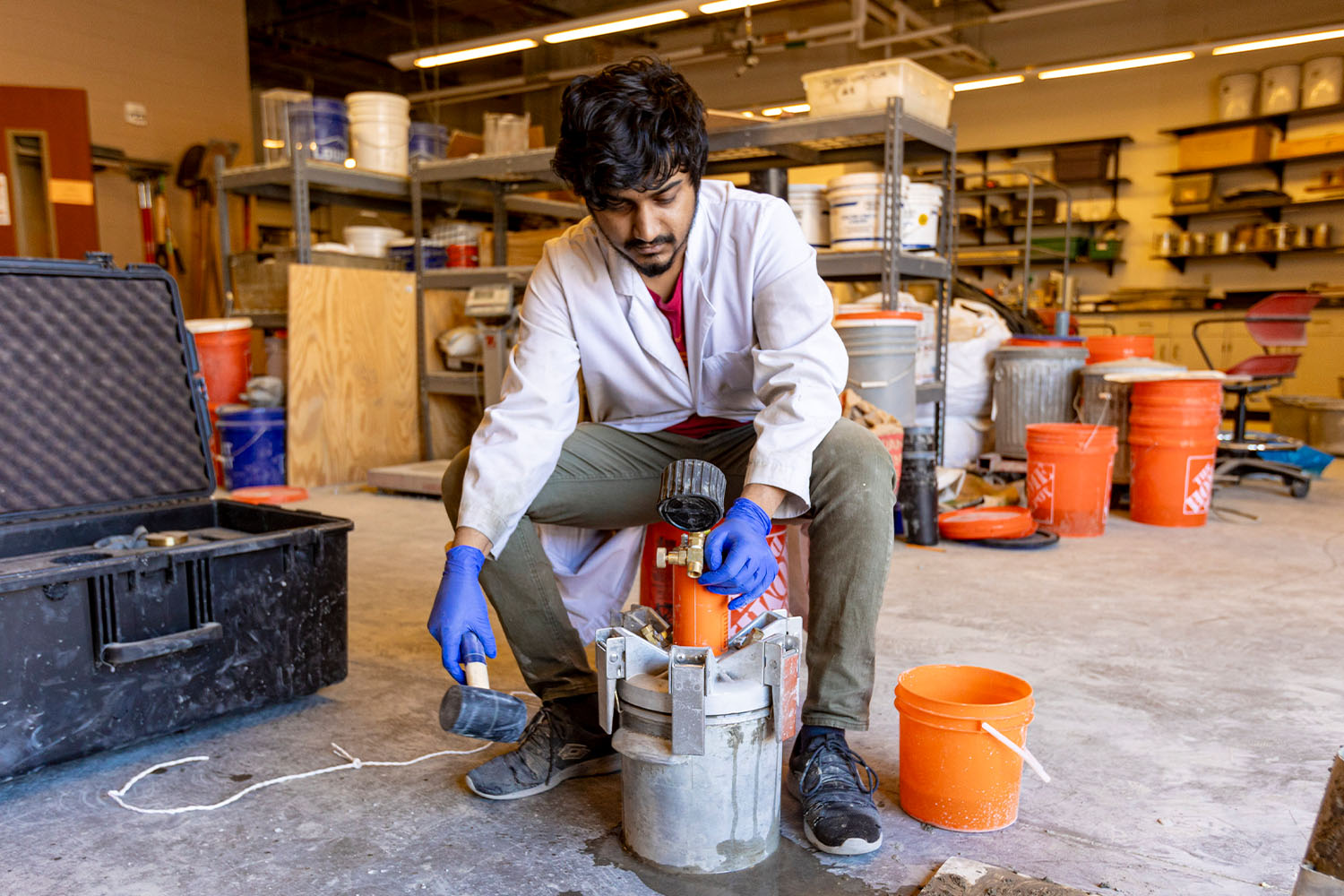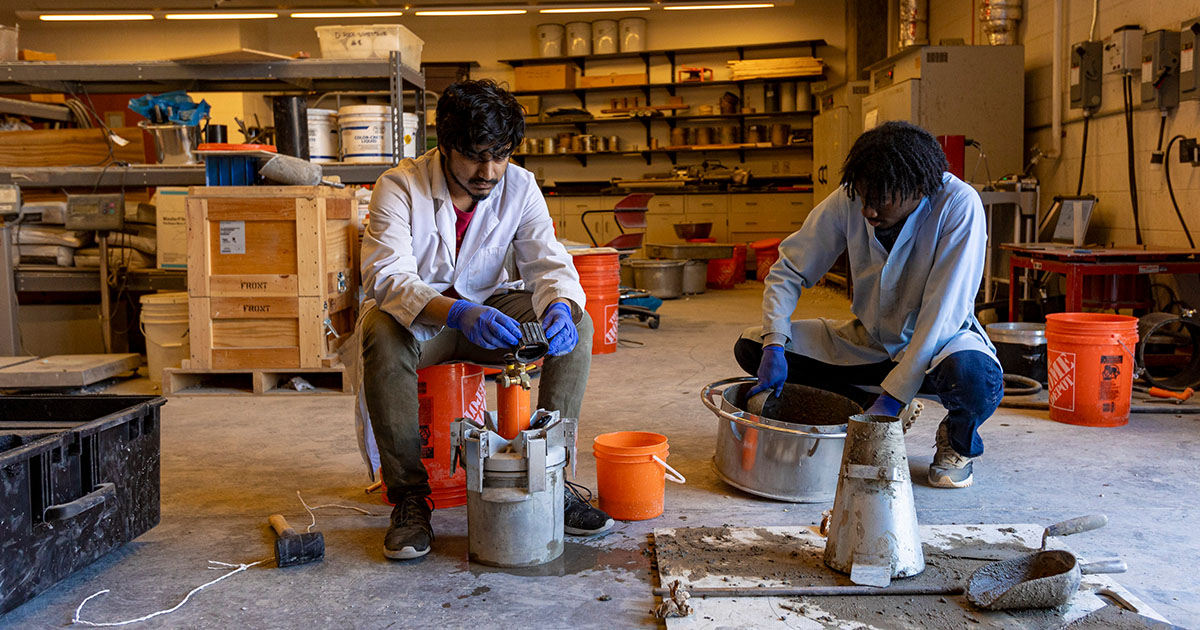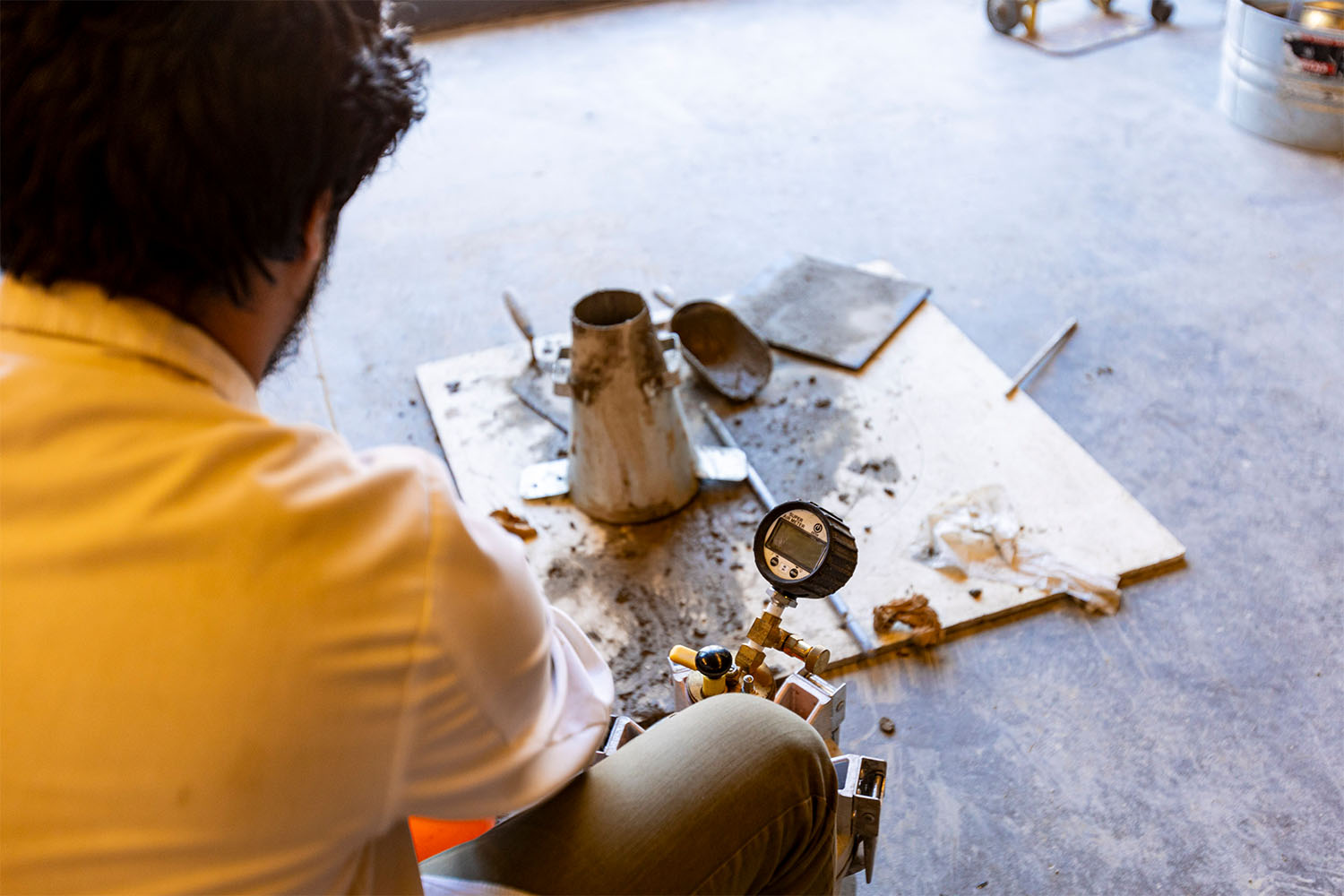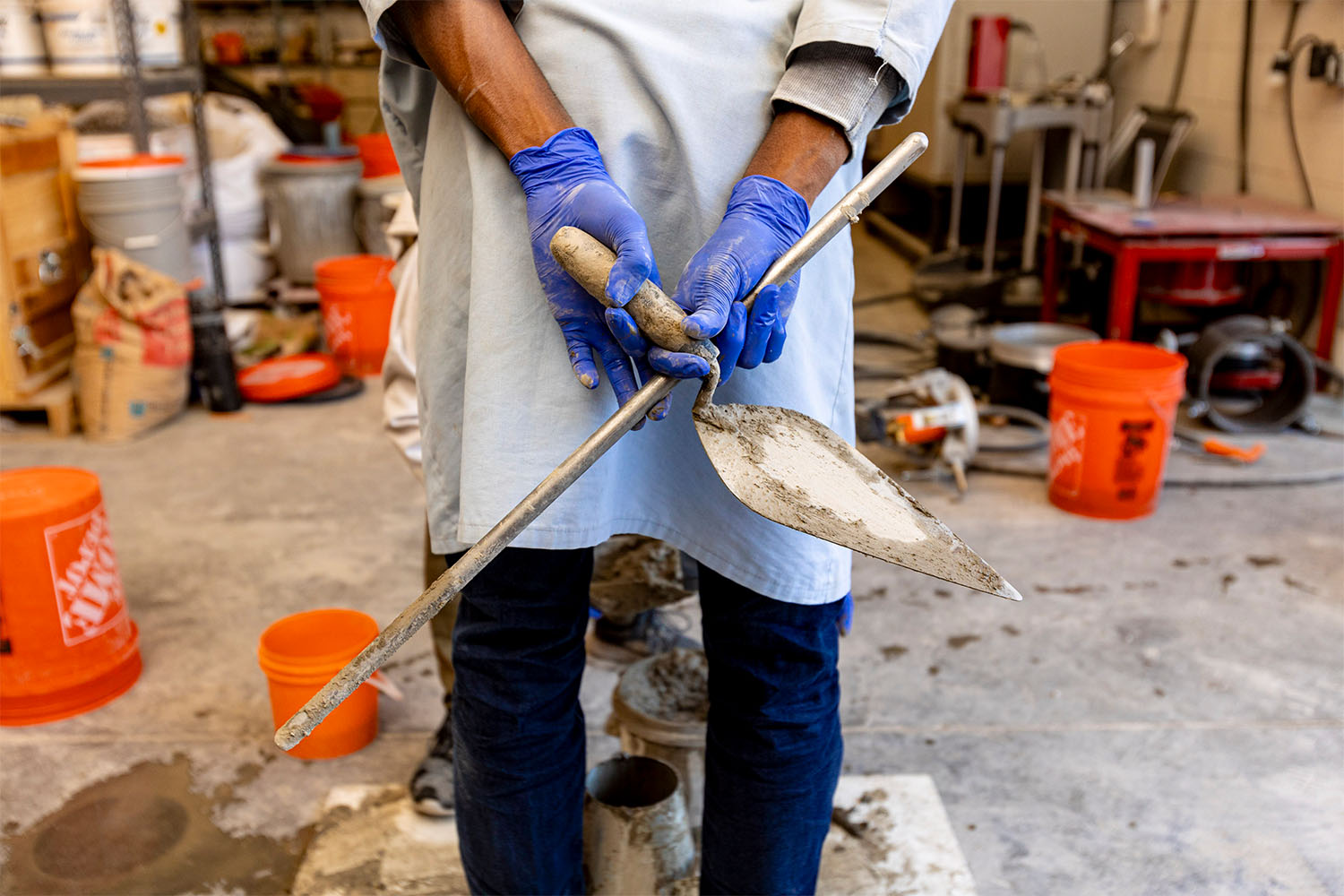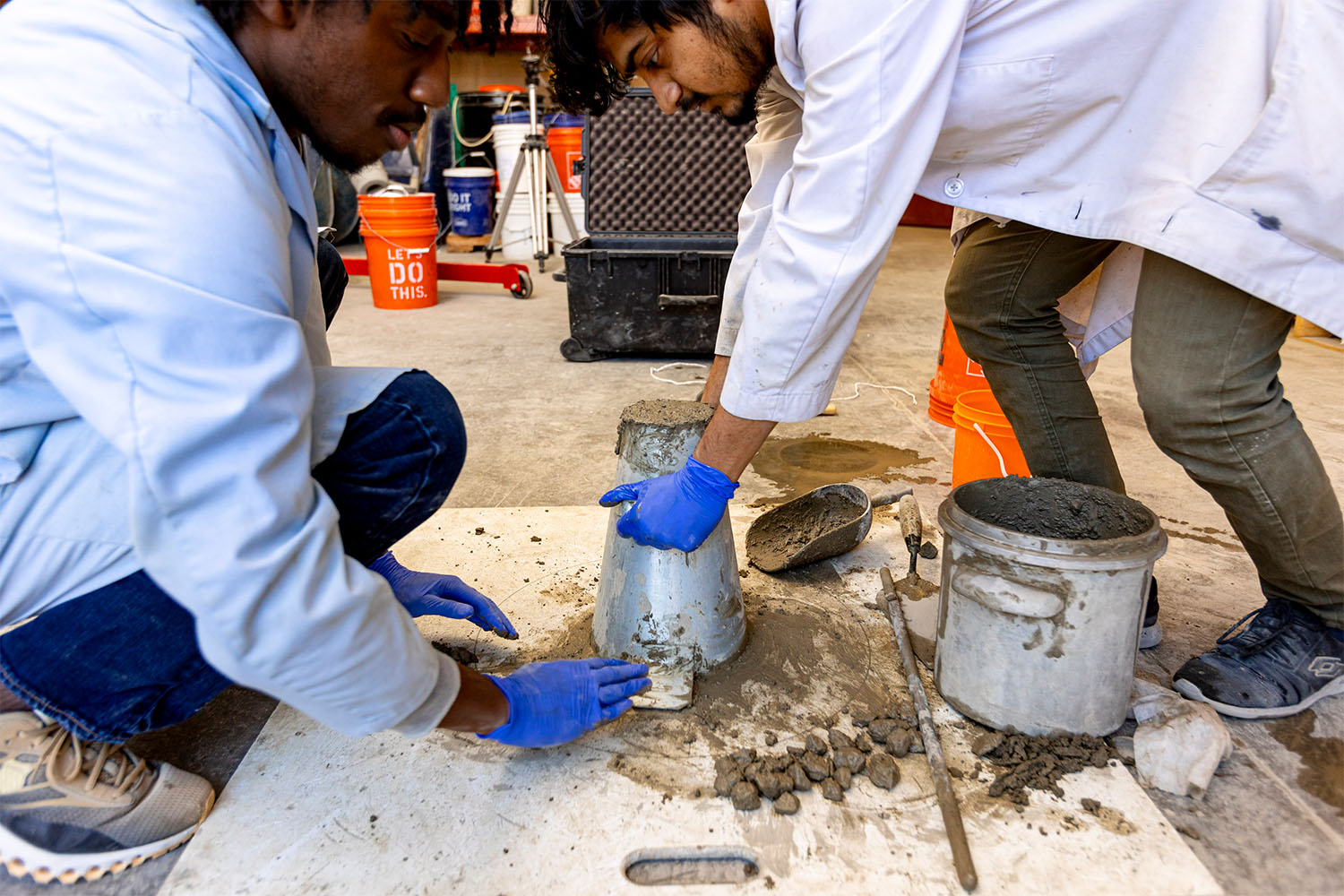By Rhiannon Potkey. Photography by Shawn Poynter.
Sazzadul Saykat and Caleb Napper each grab a side of the large mixing bowl filled with concrete and carry it across the lab floor to pour into a funnel. As the concrete mix gradually seeps into the center of a circle drawn on the ground, the graduate students measure the rate of the flow and how many inches the mix spreads to fill the circle.
Surrounding them in the John D. Tickle Engineering Building are large orange Home Depot buckets filled with rocks and sand from throughout Tennessee.
Saykat and Napper have spent countless hours performing the same routine over the past few months, hoping to play a major role in creating a more environmentally friendly method of producing concrete.
A group from the Department of Civil and Environmental Engineering, led by Professor John Ma, has been working on two research projects—one with the Tennessee Department of Transportation and Tyler Lacy, transportation project specialist and senior engineer with TDOT’s materials and tests division, and one with the US Department of Energy– Oak Ridge National Laboratory and Denise Silva, senior R&D staff member at ORNL. The objective of both projects is to develop new concrete mixtures through an innovative approach that will deliver the same quality of concrete with much lower cement content, resulting in a reduction of embodied carbon.
Any concrete in Tennessee in the future is going to be impacted by this project. It’s trying to change the way concrete is being done by looking at a new way of developing concrete mixtures that are innovative, more environmentally friendly, more durable, and has a lower cost.”
“Any concrete in Tennessee in the future is going to be impacted by this project,” said Research Associate Ammar Elhassan. “It’s trying to change the way concrete is being done by looking at a new way of developing concrete mixtures that are innovative, more environmentally friendly, more durable, and has a lower cost. This change is not easy, either. It will take a lot of effort from everybody involved in making and delivering concrete.”
UT’s work with TDOT began in 2002 and will last through the end of 2024. It’s part of the US Department of Transportation’s pledge to help reach the federal government’s goal of a 50 to 52 percent reduction in US emissions by 2030 and a net zero economy by 2050.
Cement is the most widely used substance on earth after water yet is one of the least environmentally friendly. The cement industry is responsible for 8 percent of global carbon emissions—triple the emissions of the aviation industry.
TDOT has been reviewing the entire concrete production chain, starting from manufacturing to the mixing process to the placement plans of the concrete as structures likes bridges, roads, and other infrastructure.
UT has received rocks and sand samples from four different regions of Tennessee to create mixtures that could be produced in each area with native materials. The team is trying to decrease the amount of cement in each concrete mix by 20 to 30 percent while keeping the same amount of strength and durability.
“The past has focused on needing concrete that can last longer. But now the objective has shifted to not just being strong but also environmentally friendly concrete,” Elhassan said. “The aspect of environment has been added to the equation, and that is what we are all working on.” 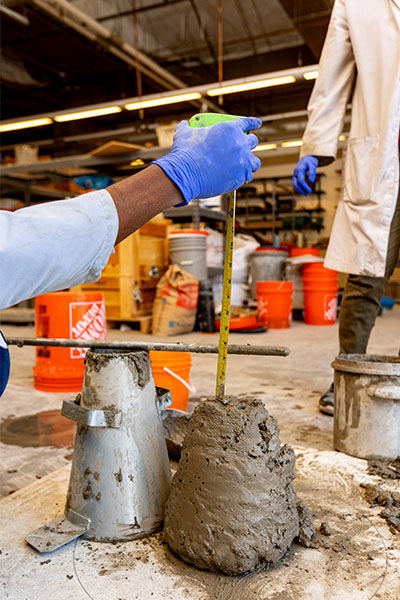
During the testing process in the lab, the team is using a rheometer that was purchased from Brazil. The device is used to study rheological parameters that make concrete easy to work with in the field, such as mixing profiles, shearing profiles, and mixing energy, in a wide range of situations and mix designs. Someone traveled from Brazil to train the students on using the device.
“As far as I know, we are one of only four universities to use it for mixing concrete. It’s a pretty cool toy,” Saykat said. “Typically other people use a drum mixer. It’s very uncommon to have it in our lab, and it’s been really fun to use it.”
On the bottom floor of the building, the team tries to simulate what can happen to the concrete in real life. They place samples in cylinder containers to store in a bath until they can test them under a compression machine to see how each batch breaks. They need to make sure every mix can withstand all seasons and weather impacts.
“It’s been really cool to learn about a lot of different things that you didn’t consider to even be issues, like the way you mix the concrete, the machines you use, or the different types of cement people use,” Napper said. “It gives you a little bit more appreciation for being able to erect these strong buildings as well as keep environmental safety in mind.”
The team has been meeting with TDOT every three months in Nashville to show them the results and explain what the plan is for each upcoming phase. Although the results are not published yet, the outcomes have been promising.
“We can tremendously cut the amount of cement by more than 20 percent at least and yet maintain and improve the properties of the concrete across Tennessee,” Elhassan said. “This would have a tremendous impact not just on the environment by reducing the amount of C0 emissions through using less cement in concrete, but also save tax dollars by paying less for a reduced amount of cement.”
Knowing they are working on something that will have such a large impact across the state and help the environment is a point of pride for the team. It’s possible that most of the state’s roads, bridges, and other infrastructure will be influenced in the future by their transformational method of producing concrete.
“TDOT will not be able to make this change without scientific contributions,” Elhassan said. “UT is providing the grounds for this decision to be made by the state by providing important scientific results and observations of what the impacts of this new way of making concrete will be.”
